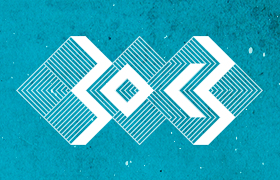Using ethnography to build internet freedom tools for real people

In our new dystopian world of pervasive surveillance, most people are at a loss what to do. The tools that allows us to maintain a semblance of privacy are really, really hard to use. Most of us won’t even try and just accept our fate, with resignation and some bitterness.
Michael Brennan is one of these people trying to change that.
He gave a talk a few days ago at the 30th Chaos Communication Congress [30c3] by the Chaos Computer Club [CCC] on how we can use ethnography and human-centered design to build more effective tools that can be used by individuals from all around the world to circumvent censorship and surveillance and communicate safely and anonymously.
Few hackers will disagree that users are not given enough consideration when building Internet Freedom Tools designed to circumvent censorship and surveillance. But how do we do it? This talk outlines a framework for a user-focused approach to the Development and Impact of Internet Freedom Tools through using ethnography, human-centered design, and the practice of research-based product definition. This talk is intended for developers, researchers, and journalists who seek to understand how better tools can be developed to protect anonymity and provide unfettered access to the Internet.
Internet Freedom Tools (IFTs) are developed to solve the technical challenges of anonymity, privacy, security and information access. Focus on these technical challenges rather than the user of an IFT can lead to overlooking the motivations, needs and usability issues faced by user communities. Further, IFTs may solve a technical challenge for users, and yet fall short when it comes to user experience. There is a disconnect that must be remedied for IFTs and the people who use them to realize their full potential.
This talk seeks to provide new insights to developers and users in need of knowledge on how they can better address relevant problems, create appropriate solutions and help users with IFTs. This talk explains to the audience what tools are available for user-focused design. It also walks through a framework to guide the development of IFTs that is grounded in ethnographic methods and human-centered design, and how this framework is being used to conduct an IFT user community.
This work is currently being conducted by SecondMuse and Radio Free Asia through the Open Technology Fund.
ADDENDUM: But, what is “Ethnography”? What are “User Communities”?
- Ethnography is defined as the study of culture and human motivation through qualitative research. Ethnographic practices complement usability studies by tapping into needs and motivations of people and users to give the “why” behind certain actions observed solely through conducting usability research. This method includes interviews, observing specific behaviors and understanding the material culture and surrounds of a target group.
- A community is defined as a group of users that can be defined by geography, culture, shared experiences, or shared challenges. User is defined as someone who is currently utilizing a particular IFTs such as Tor, RedPhone, CryptoCat, and/or other privacy, security, anonymity and access enhancing technologies and methodologies created by developers or users themselves. A user may also be defined as a potential user of such technologies and tools.



